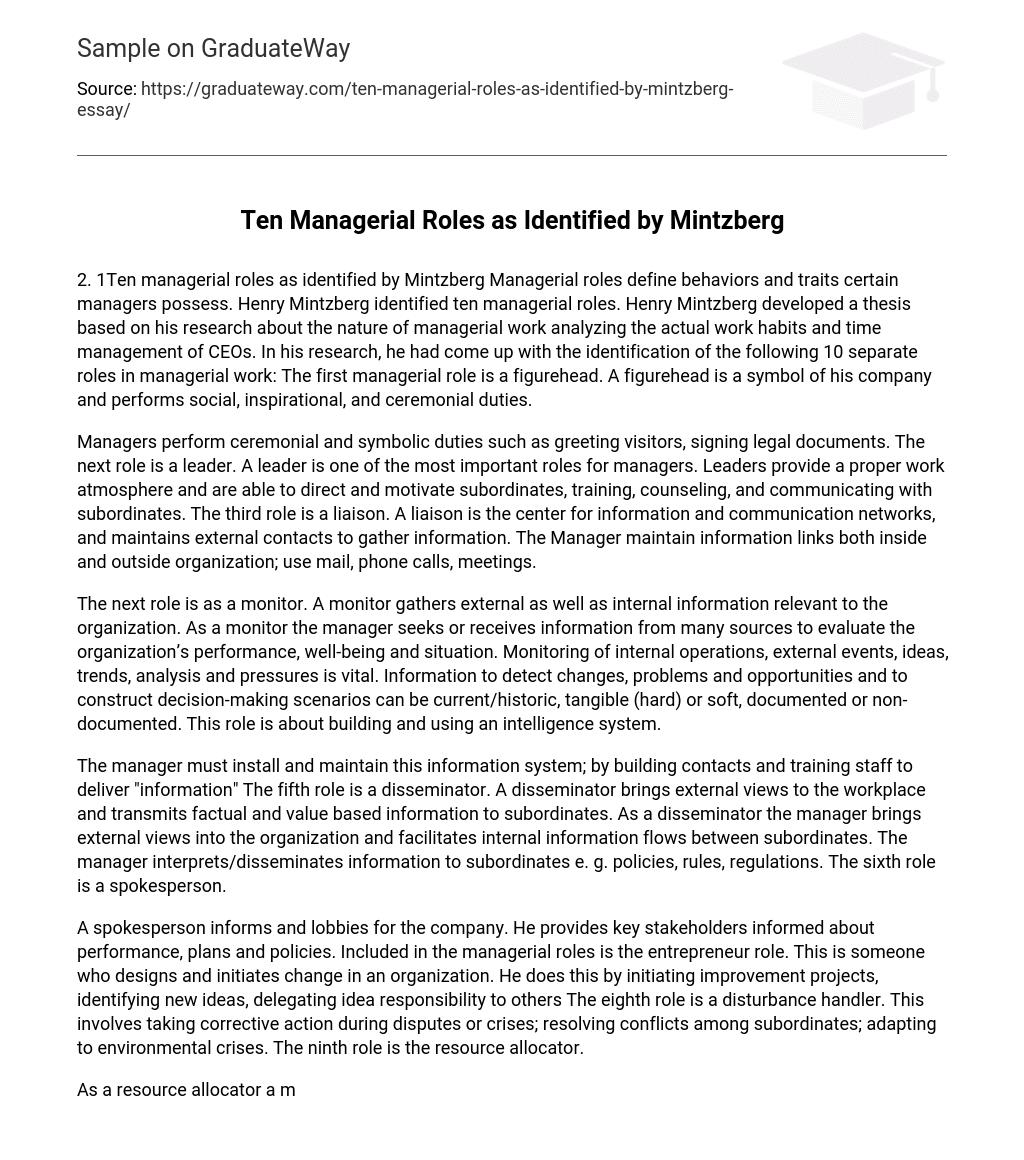Henry Mintzberg conducted research on CEOs’ work habits and time management, leading to the identification of ten managerial roles. These findings formed the basis for his thesis on the nature of managerial work. The following list outlines the ten distinct roles that were discovered:
The first managerial role is that of a figurehead, serving as a symbol of their company and responsible for social, inspirational, and ceremonial tasks. Managers carry out ceremonial and symbolic duties, including welcoming visitors and signing legal documents.
A key responsibility of managers is being a leader, which involves creating a positive work environment and guiding and inspiring team members. Managers are accountable for providing training, counseling, and maintaining effective communication with their subordinates.
The third responsibility of a manager is to serve as a liaison, with the task of collecting information and managing communication networks both internally and externally. The manager employs different methods, including mail, phone calls, and meetings, to establish and sustain information connections within and outside the company.
The monitor role involves gathering both internal and external information that is relevant to the organization. The manager actively seeks or receives information from various sources in order to assess the organization’s performance, well-being, and overall situation. This includes monitoring internal operations, external events, ideas, trends, analysis, and pressures, which is crucial.
The role of the manager is to establish and manage an intelligence system that detects changes, problems, and opportunities, as well as constructs decision-making scenarios. The information gathered can be current or historic, tangible or soft, and documented or non-documented. To fulfill this role, the manager must develop and maintain an information system by establishing contacts and training staff to effectively deliver information.
The manager’s fifth responsibility is to distribute information by sharing external perspectives and transmitting both factual and value-based information to subordinates. As a disseminator, the manager brings in outside views and facilitates internal information flow within the team. Additionally, they interpret and distribute different types of information to subordinates, including policies, rules, and regulations.
The spokesperson is in charge of communicating and advocating for the company, as well as keeping important stakeholders updated on performance, plans, and policies.
Being an entrepreneur is a role that falls under the manager’s responsibilities. This entails taking charge of designing and executing changes within an organization, such as launching improvement projects, discovering fresh ideas, and assigning idea ownership to others.
The eighth role of being a disturbance handler involves taking corrective action in the presence of disputes or crises, resolving conflicts among subordinates, and adapting to environmental crises.
A manager has the responsibility of making decisions regarding resource allocation. This includes tasks such as scheduling, budgeting, setting priorities, and controlling the use of organizational resources.
Mintzberg’s final role is that of a negotiator. This role involves actively participating in negotiations with individuals and external organizations. The negotiator acts as a representative for the department during discussions involving union contracts, sales, purchases, budgets, and other matters related to departmental interests.





